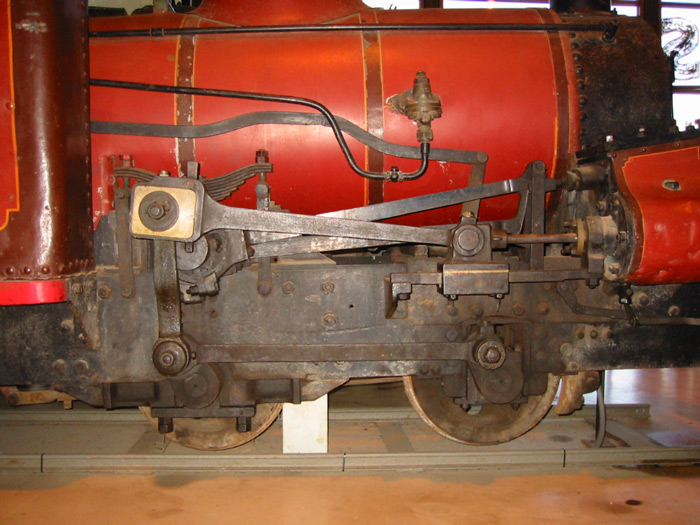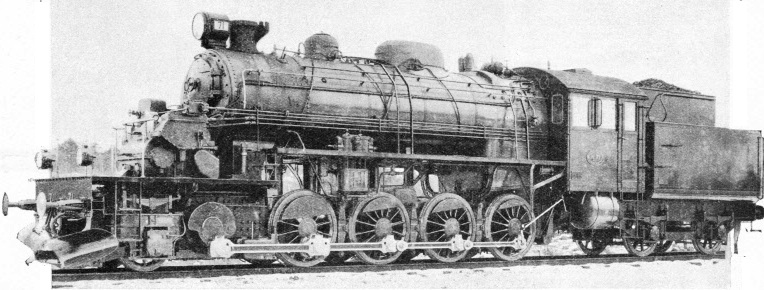Jackshaft (locomotive)
The jackshaft is a part of the drive locomotives with mechanical transmission and pinion drive. It is usually mounted transverse to the direction in the vehicle frame, or in the transmission housing, and transfers the torque of the transmission by means of coupling rods to the wheel sets of the locomotive. This form of propulsion was common until about 1940 when many electric locomotives and diesel locomotives, but is now only used for slow locomotives with low power. The jackshaft itself is located mostly in the sprung part of the vehicle. Only by articulated coupling rods, the drive power is transmitted to the unsprung drive axles.
One of the few examples of steam locomotives with a jackshaft is the Bavarian " glass Kastl " ( Bavarian PtL 2/2). The dummy shaft located between the driving axles should avoid too long a drive rod. A drive via jackshafts was also some steam locomotives for use, for example in the two locomotives of the DR series T 18.10.
In the case of Ce 6/8II SBB the jackshaft not like for example in the Ge 4 /6 of the Rhaetian Railway, but as a support end and compensating element serves to transmit the drive force through side rods on the drive axles. The triangular rod which is attached to the countershaft, the first Treibradsatzes and only then on the jackshaft, directly drives the first Treibradsatz. The fortified by the triangular rod coupling rod then drives the second Treibradsatz. With a further coupling rod of the third wheel is driven.










